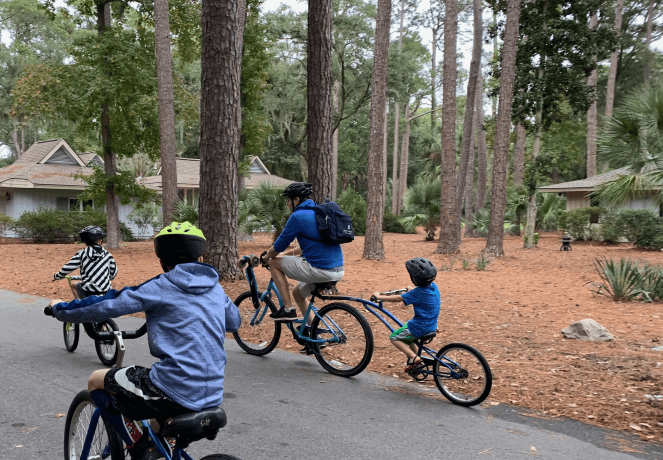By Francine Furtado
The days surrounding Thanksgiving are generally those of excess — eating, boozing, and shopping, oh my.
At this same time, as a member of Sousa Elementary’s Green Committee*, we are writing curriculum to go along with our theme for this school year: reduce.
In an effort to provide a checklist for the students of ways in which they can begin to reduce, we have listed for them a cornucopia of things that typical Americans waste: energy, money, food, and water.
And while we are inundated with ways to conserve water, we rarely hear about the most effective way to reduce water usage: stopping the watering of our lawns.
Americans use 20 trillion gallons of water per year on lawn-watering. In comparison, we use 30 trillion gallons to irrigate all of our crops (Freakonomics podcast: How Stupid Is Our Obsession With Lawns?).
For a lot of people, a lawn is the perfect form of nature. But let’s be frank — the lawns we like don’t actually occur in nature. And what goes into producing such a lawn is full of the most unnatural activity.
From the excess watering, to the toxic fertilizer, the weed-killers, the mowers, the trimmers and the destructive leaf-blowers, the fuel to power all of this machinery, the fuel to power the trucks to transport the people who run the machinery… all in pursuit of this unrealistic ideal of what our yard should look like.
Most of these items could have their own Earth Matters article (leaf-blowers and toxic fertilizers already have), but this column will stick with the absurdity of watering.
If I’m about to lose you as a reader now (because you actually like your perfectly manicured lawn and think it is a reasonable way to waste water), in short, this ridiculous tradition started in the 1950s in Levittown, and the way to mitigate waste now is to plant indigenous grass (fescue).
As a refresher, Long Island’s inhabitants (of which there is an over-abundance) rely upon one source for our groundwater, also known as drinking water, unlike most parts of the country, which generally have several means of accessing groundwater.
Beneath our feet lie three layers of aquifers, all of which we pull from to meet the growing needs of our excessive landscaping lifestyles. And while a majority of the country has curtailed their use of groundwater, Long Island is one of the few regions in America where water usage continues to climb.
All thanks to lawn-watering.
It is for this reason that all Long Islanders should learn a new term: xeriscaping.
Xeriscaping is landscaping and gardening that reduces or eliminates the need for supplemental water from irrigation. It is promoted in regions that do not have easily accessible, plentiful, or reliable supplies of fresh water, and is gaining acceptance in other areas as access to water becomes more limited. (That’s us.)
There is currently an powerful rewilding movement taking place in Port Washington. Being led by local environmentalist David Jakim, rewilding is a form of xeriscaping.
The Long Island Native Grass Initiative is a group of nonprofit organizations, governmental agencies, and other concerned individuals, organizations, and businesses on Long Island whose aim is to preserve the genetic integrity of Long Island grasslands by creating a source of genetically appropriate local grass seed for use in erosion control, wildlife habitat restoration, and landscaping projects.
Per the Long Island Native Grass Initiative, Long Island’s plants must endure weather extremes that cause erratic cycles of frost and thaw, in addition to severe and salty winds, all on top of dry and sandy soil. These conditions on Long Island are unique, and restoration of its natural areas must accommodate its harsh environment.
The Long Island Native Grass Initiative’s website states that the most cost and time-effective improvement would be the “use of seeds and plants that have, over thousands of years, become genetically programmed to withstand these difficult environmental factors.”
In conclusion, at this time of year when we celebrate the indigenous peoples of our beautiful and fragile land, let us consider planting indigenous grass (fescue). Maybe it won’t feel as soft under your feet, but how many of you are barefoot on your lawns these days anyway? (I am!)**
And then turn off those sprinkler systems, if you have them. I haven’t watered my lawn the past two summers and it looks just fine to me come the end of August. But hey, beauty is in the eye of the beholder.
* Sousa’s Green Committee was founded well over 10 years ago by then HSA co-presidents Nora Johnson and Lee-Anne Vertrone. This committee’s focus was further fleshed out by my ever-impressive fellow Earth Matters columnist Juliane Saary-Littman.
** As an aside, you should be! Earthing is another term we should learn. It means going barefoot on a usually natural ground — grass, sand, etc. — and reaping the many health benefits from the transferring of the Earth’s electrons.

